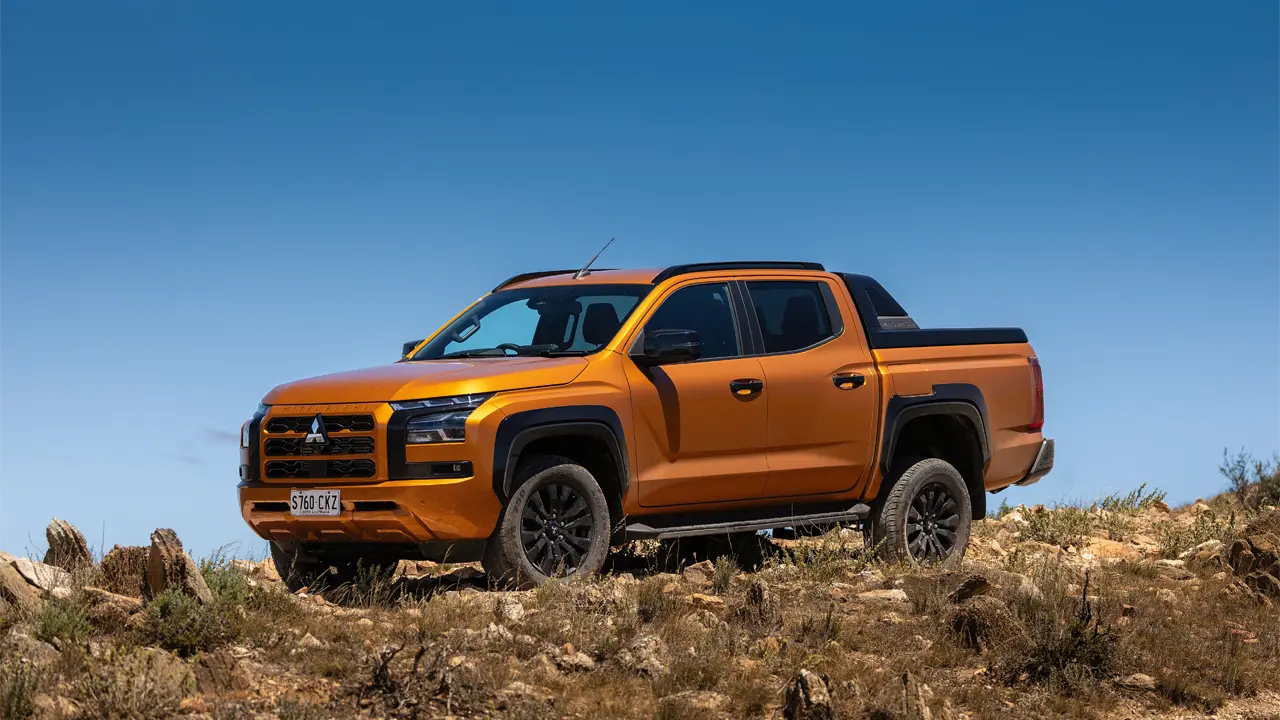Mitsubishi’s workhorse broadens its appeal.
Story Bruce McMahon
The Triton ute is a long-standing, well-worn mainstay of Mitsubishi’s Australian showrooms. But it has, in many ways, played second fiddle to rival 4WD utilities.
That changes with the 2024 Triton. Bigger, bolder and dearer, this reworked Mitsubishi has stepped up in class and competence. In dual cab, 4WD guise it now has the substance to be considered more keenly on the shopping list alongside class leaders such as the Ford Ranger and Isuzu D-Max. And the price is most competitive.
Major benefits over previous Tritons include a larger body, a modern, yet commonsense, cabin layout and, best of all, excellent steering. Front-end responses here are up with the best of the rivals and a proper bonus on a back-country road. Only a couple of quibbles with some of the add-on technology mar the new ute’s report card.
The Triton’s front-end style and big grille are perhaps a tad busy, but the longer, wider vehicle – now 5.3 x 1.8m on a 3,130mm wheelbase – has a bolder road presence, with dramatic body creases along the flanks, plus a more balanced looking, workmanlike rear tub. The 4-door utes can tow 3,500kg and payloads vary across 4 variants from 1,030kg to 1,095kg. But only 4 tie-down points? Another 2 toward the tub’s rear are always handy.
The wider cabin with better shoulder room is neat and straightforward, with buttons and knobs for functions such as air-conditioning, a reasonably intuitive 7-inch touch-screen for information, entertainment and some vehicle settings, plus sensible white-on-black analogue instruments for road and engine speeds. There is the usual line-up of plugs and USB-A and USB-C ports, with clever touches such as small storage pockets added to the back of the front passenger seat for the likes of sunglasses and phones.
A host of safety, driver assistance and convenience features are standard, including forward collision mitigation, all-round monitoring cameras and a tyre-pressure monitoring system, one of the most useful of the new safety items on modern machines. Less welcome, before a mid-year software update, was Triton’s hyperactive driver monitoring system, in which even a good look right at T-junctions could have the steering wheel-mounted monitor squawking alarms. Mitsubishi has now moved to make this less sensitive. The remaining awkward tech is the engine’s ill-tempered stop-start system, which is sluggish, grumbling loudly about restarting from a full traffic stop.
On the move, there are times when a tad more power and torque over the twin-turbocharged diesel’s 150kW and 470Nm could be appreciated, though this can be manipulated by shifting manually through the 6-speed automatic. This is more a compliment to chassis design and cabin comforts than criticism of the drivetrain, because this Triton is quite the sporting drive down highways and byways – bitumen, dirt or gravel – with some of the best road manners in class. Reworked suspension and steering are well-tuned to Australian tastes and road conditions. (Mitsubishi engineers tested more than 100 combinations of front and rear suspension options in Australia. There’s a specific front shock absorber and spring combination plus unique specification rear shock absorbers for Australian customers. The Japanese-Australian collaboration also contributed to the electric power steering tune.)
Highway cruising should see fuel consumption not far north of 7L/100km and workday averages close to 9L/100km.
On bush, beach and mountainside tracks, the Mitsubishi is a capable off-roader. The basic GLX scores a 2-speed transfer case, operated with a simple dial. The GLX+ adds a rear differential lock, and GLS and GSR variants score Super Select 4WD-II (allowing 60–40 all-wheel drive on any surface), terrain control (with customised drive modes for different surfaces), hill descent control and standard rear suspension, with 3 leaves instead of 5.
Across the range, there’s 228mm of ground clearance and excellent gearing in low for crawling over rocks and such. Visibility is good, aided by low-down camera views. Ride control over rough paddocks is good, although the rear will bounce a bit when unladen.
While prices have risen, there remain some cost advantages over rivals, with a 10-year warranty and 10-year capped price servicing to sweeten the deal.
This story excerpt is from Issue #157
Outback Magazine: October/November 2024









